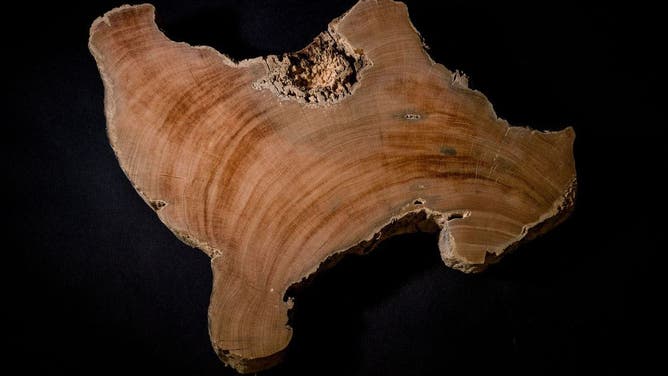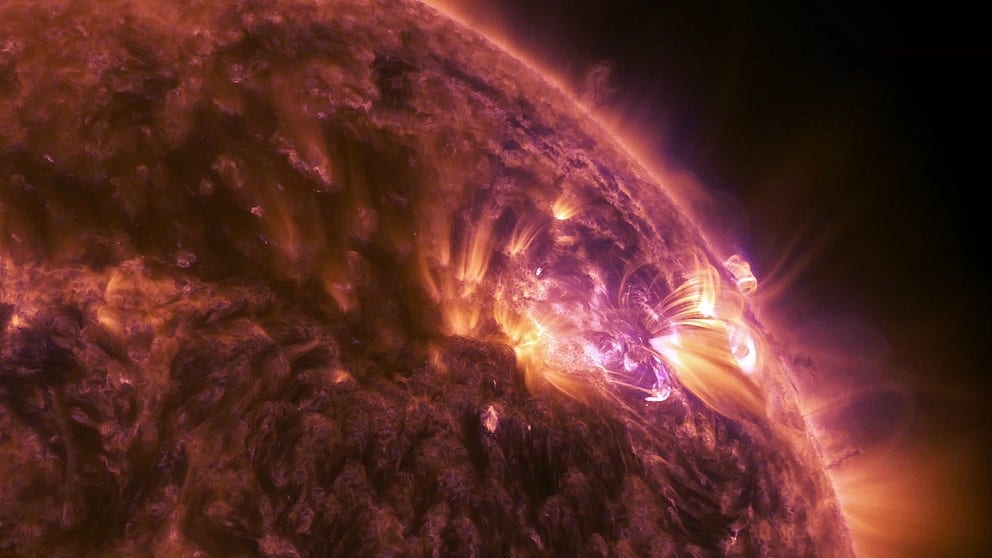Can ancient tree rings help Earth prepare for dangerous space weather?
Space weather is monitored by various agencies and includes solar flares, coronal mass ejections and geomagnetic storms. Significant geomagnetic storms can lead to disruptions in satellite operations, failures of the power grid and auroras.
Northern Lights Cannibal CME explained by Dr. Mark Conde
Dr. Mark Conde explains the Northern Lights
MORGANTOWN, West Virginia – Ancient tree rings found in several species may hold evidence of past space weather events, according to researchers at West Virginia University.
Amy Hessl, a professor of geography at WVU, developed the hypothesis after examining trees such as the bristlecone pine, the deciduous bald cypress and oak trees preserved in Missouri riverbeds.
According to Hessl, rings provide a glimpse of past solar activity known as Miyake events and signify significant increases in atmospheric radiocarbon levels.
Studies have unveiled at least nine Miyake events have occurred over the past 14,000 years, including in 774 AD and 993 AD.
"If one of these events were to happen today and you were on a high-latitude flight to Norway, you’d probably receive your lifetime dose of radiation on the plane," Hessl stated. "And if you were in space, it potentially could kill you."
IMPROVED SPACE WEATHER FORECASTS NEEDED TO AVOID DESTRUCTION OF SATELLITES

Tree rings may hold clues for space weather
(West Virginia University / FOX Weather)
Space weather events, including solar flares, coronal mass ejections and geomagnetic storms, are monitored by various agencies and can lead to disruptions in satellite operations, failures of power grids and auroras.
Solar flares are the primary source for most particles that reach Earth, but Hessl hopes that three-ring records can assist in identifying other major sources such as explosions of supernovas.
"We’re trying to define how extreme those events were," Hessl stated. "When did they occur, exactly? How long did the radiocarbon last in the atmosphere? We need to be sure we’re using reliable recorders, so that’s what we’re trying to figure out. How reliable are these trees at recording radiocarbon levels in the atmosphere, really?"
Once more is known about the events, researchers hope that industries will take heed of the results and protect technologies from future potential impacts.
GEOMAGNETIC STORM CAUSES DESTRUCTION OF 40 NEW STARLINK SATELLITES
"Until recently, scientists have assumed that trees take up radiocarbon evenly. We’ve been treating trees as if they’re scientific instruments. But they’re not. They’re potentially very biased in the way they take up the radiocarbon. So we’ve been studying why different species of trees or trees at separate locations don’t take up radiocarbon the same way. Then when you look at the data, you have a better understanding of how reliable this recorder is," Hessl recently stated.
Space weather explained: What is a solar flare?
The largest explosions in the solar system, a solar flare is an explosion of energy that occurs on the sun’s surface, often appearing as a localized burst of bright light.

